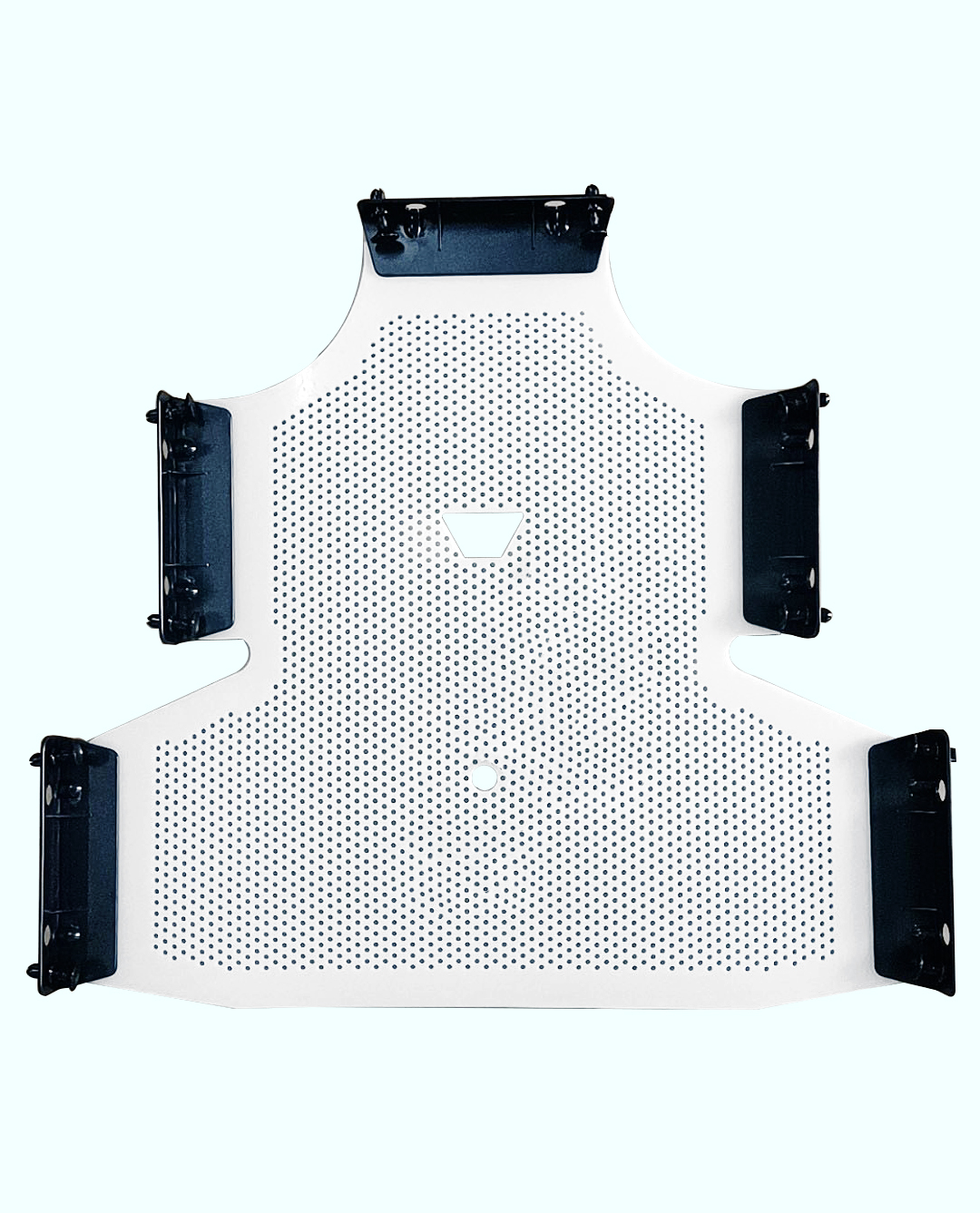Views: 0 Author: Site Editor Publish Time: 2024-06-28 Origin: Site

In the realm of modern oncology, precision and patient comfort are paramount. One of the tools that have revolutionized radiotherapy is the Radiotherapy Thermoplastic Mask. These masks are designed to immobilize patients during treatment, ensuring accurate targeting of cancerous tissues while sparing healthy ones. The advent of non-sticky radiotherapy thermoplastic masks has brought a new wave of benefits, enhancing both the treatment process and patient experience.
Traditional radiotherapy masks often cause skin irritation due to their adhesive properties. Non-sticky radiotherapy thermoplastic masks eliminate this issue, providing a more comfortable experience for patients. The absence of adhesive materials means less friction and pressure on the skin, reducing the likelihood of rashes and discomfort.
Non-sticky masks are designed with patient comfort in mind. They often feature improved breathability, allowing patients to breathe more easily during treatment sessions. This is particularly beneficial for patients who may experience anxiety or claustrophobia, as it helps them feel more at ease.
The primary function of a radiotherapy thermoplastic mask is to immobilize the patient, ensuring precise targeting of the treatment area. Non-sticky masks excel in this regard, providing stable and secure immobilization without the need for adhesives. This stability is crucial for the accuracy of radiotherapy, as even slight movements can affect the treatment's effectiveness.
Non-sticky radiotherapy thermoplastic masks offer consistent reproducibility, meaning that the mask can be used multiple times without losing its shape or effectiveness. This consistency is vital for treatment planning and execution, as it ensures that the patient is positioned identically in each session, leading to more accurate and effective treatments.
One of the significant advantages of non-sticky radiotherapy thermoplastic masks is their ease of cleaning. Traditional adhesive masks can be challenging to clean and may harbor bacteria or other contaminants. Non-sticky masks, on the other hand, can be easily wiped down and sanitized, promoting better hygiene and reducing the risk of infections.
Non-sticky masks are often more durable than their adhesive counterparts. They are designed to withstand multiple uses and cleanings without degrading in quality. This durability not only ensures consistent performance but also makes them a cost-effective option for healthcare providers.
Non-sticky radiotherapy thermoplastic masks contribute to environmental sustainability by reducing waste. Traditional adhesive masks often need to be discarded after a single use, leading to significant medical waste. Non-sticky masks, with their reusable nature, help minimize this waste, making them a more environmentally friendly option.
From an economic perspective, non-sticky masks offer cost savings for healthcare facilities. Their durability and reusability mean that fewer masks need to be purchased over time, reducing overall expenses. Additionally, the reduced need for adhesives and cleaning supplies further contributes to cost savings.
The benefits of non-sticky radiotherapy thermoplastic masks are manifold, ranging from enhanced patient comfort and treatment precision to improved hygiene and environmental sustainability. By eliminating the need for adhesives, these masks provide a more comfortable and reliable option for patients undergoing radiotherapy. Their durability and ease of maintenance make them a cost-effective choice for healthcare providers, while their reusable nature contributes to environmental conservation. As the field of oncology continues to advance, non-sticky radiotherapy thermoplastic masks stand out as a significant innovation, improving the overall treatment experience for patients and practitioners alike.
Most patients spend about 30 to 60 minutes on a CT simulation, with some sessions taking up to 90 minutes for complex cases. The process remains straightforward and centers on patient comfort. CT simulation serves as a crucial step before radiation therapy. Staff use advanced equipment and clear instructions to help patients feel at ease throughout the session.
Thermoplastic splints have become increasingly popular in the medical field due to their versatility and effectiveness in treating a wide range of conditions. In this article, we will explore the various uses and benefits of thermoplastic splints, shedding light on how they can aid in the recovery p
IntroductionRadiotherapy is a crucial treatment for many types of cancer, utilizing high-energy radiation to target and destroy cancer cells. During treatment, precision is key to ensuring that the radiation is directed at the tumor while minimizing exposure to surrounding healthy tissues. This is w
Have you ever wondered how doctors plan precise cancer treatments? CT simulation plays a critical role in radiation therapy by creating detailed 3D images of the body. This advanced technology ensures that radiation is delivered accurately to target tumors, minimizing damage to surrounding healthy tissue.
CT Simulation is a crucial step in radiation therapy. It ensures accurate treatment by mapping the precise location of cancer cells. Without proper preparation, the accuracy of radiation delivery can be compromised, which could affect the treatment's effectiveness.